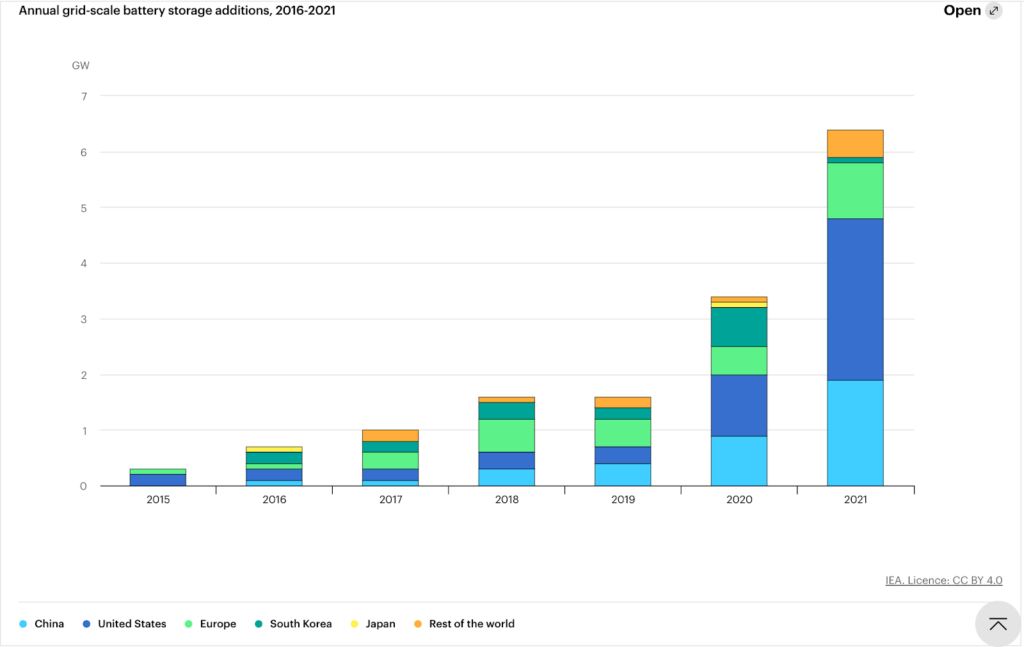Our energy needs can be supplied sustainably. Wind and water, heat and light from the sun, and the geothermal heat in the Earth are all energy sources that can supply our needs using technology that is available today. Most importantly, they represent our best hope in the fight against climate change.
America’s abundant renewable energy resources, coupled with energy efficiency measures and technological advances that have made renewable energy cheaper and better than ever, open the possibility of transitioning our entire economy to run on 100 percent renewable energy.
Wind Power
America’s offshore wind resources are big enough to produce more electricity than the nation currently consumes. To make use of these resources, policy-makers should remove the barriers slowing down the growth of the offshore wind industry, and support and hasten that growth to provide clean energy where it’s needed most.
Massachusetts has among the greatest offshore wind power potential of any state in the nation. According to the National Research Energy Laboratory, Massachusetts can produce 1,050 terawatt hours (TWh) per year of electricity. That far exceeds both Massachusetts’ current consumption of 56 TWh per year and the laboratory’s projection of future needs after widespread electrification of 140 TWh. This puts Massachusetts in a position to be an energy exporter.
Solar
Solar electricity generation represents a clean alternative to electricity from fossil fuels, with no air and water pollution, no global warming pollution, no risks of electricity price spikes, and no threats to our public health.
The solar resource is enormous. Just 18 days of sunshine on Earth contains the same amount of energy as is stored in all of the planet’s reserves of coal, oil, and natural gas.
Global solar photovoltai (PV) capacity is set to almost triple over the 2022-2027 period, surpassing coal and becoming the largest source of power capacity in the world. The report also forecasts an acceleration of installations of solar panels on residential and commercial rooftops, which help consumers reduce energy bills
Land availability does not constrain solar deployment. In 2050, ground-based solar technologies require a maximum land area equivalent to 0.5% of the contiguous U.S. surface area. This requirement could be met in numerous ways, including the use of disturbed or contaminated lands unsuitable for other purposes. Adding solar to every appropriate rooftop, over every parking lot, and on brownfields is the way to go. We do not need to cut down forests to put up solar.
Massachusetts is an excellent location for solar systems.
Massachusetts Solar Data
Data Current Through: Q4 2022
Solar Installed (MW): 4,158
National Ranking: 11th
Enough Solar Installed to Power: 715,336 homes
Percentage of State’s Electricity from Solar: 19.33%
Solar Jobs: 10,548
Solar Companies in State: 502 (89 Manufacturers, 191 Installers/Developers, 222 Others)
Total Solar Investment in State: $9.4 billion
Prices have fallen 53% over the last 10 years
Data from seia.org
Storage
While not a source of energy itself, energy storage technology is a critical component for creating a low-carbon electricity system. The technology takes various forms—older facilities use pumped water, while newer systems deploy lithium-ion batteries—but the fundamental goal is always the same: storing electricity to use later.

IEA (2022), Grid-Scale Storage, IEA, Paris https://www.iea.org/reports/grid-scale-storage, License: CC BY 4.0
It lets us produce clean energy when it’s cheapest, store it, and put it back into the electricity grid when needed. Using storage in conjunction with solar and wind energy helps ensure that power is available even when the sun isn’t shining and the wind isn’t blowing.
Electric vehicles are essentially batteries on wheels, and can be used to store energy. Bidirectional charging powered by vehicle-to-grid technology can both charge EVs and supply stored energy to the grid to balance demand spikes. Vehicle-to-home is similar, with the energy used to supply a home. A fully charged EV can support an average home for several days, and can produce net zero emissions if combined with a rooftop solar system. Electric water heaters can also be used as storage, if equipped with a storage tank and ”smartened” with special control devices. Heat energy can even be stored in well-insulated building envelopes. In Arizona, customers are paid for making their storage capacity available to the grid, almost like renting out a spare bedroom on Airbnb just for ‘hosting’ electricity.
The key factor that all of these technologies combined offer is their ability to create electricity with minimal harmful side-effects. The alternatives—fossil fuels (or any energy source that requires combustion, such as biomass) — are neither sustainable nor safe.